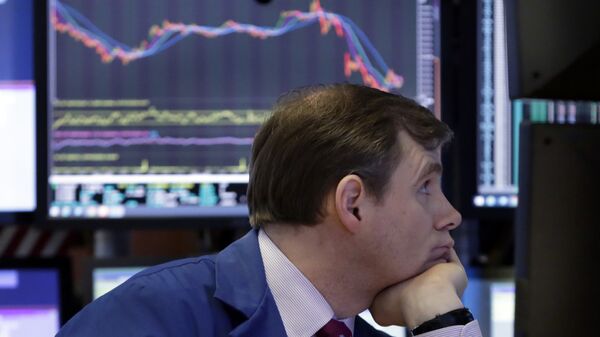Kristian Rouz — Several central banks across the developed nations have been tightening their interest rate policies, taking steps to cut balance sheets, and curb bond buyouts, suggesting the improvements in economic growth prospects would bring back the normal pace of inflationary GDP growth.
However, despite the positive inflationary developments in the US, the Eurozone, the UK, Russia, and even Japan, the global threat of stifling deflationary stagnation across major economies still lingers.
READ MORE: US Tariffs to Have Limited Effect on China's GDP Growth, Exports — Moody's
This is due to the still-tepid consumer demand, high levels of household indebtedness, slow growth in domestic non-financial sector investment, and the still-tight fiscal policies in the aforementioned economies.
Against such a backdrop, several central banks have been testing unconventional new monetary policies — such as price-level targeting and nominal GDP (NGDP) targeting — to stave off the fears of future economic crises, while tightening their conventional policy frameworks despite the still-underperforming inflation.
"We have to be vigilant to make sure we're not overstimulating the economy and generating either wage and price increases that are faster than what we're going to want in the long run, or financial stability concerns," President of the Federal Reserve Bank of Boston Eric Rosengren said in an interview Friday.
This as the gains in consumer prices are still well-below the 2-percent central bank targets across many advanced economies, including in the US — although the expectations are that core US inflation will hit its 2-percent target this year.
Such disruptions could affect jobs and impair the quality of life across the advanced world, making supply-side economics and the development of domestic manufacturing key to weathering a potential storm.
READ MORE: US Federal Reserve Urges Global Central Banks to Change Policy
"An increasingly popular narrative that sees the benefits of globalization and trade accrue only to a fortunate few is also gaining traction," the International Monetary Fund (IMF) said in a study. "Policymakers need to address the concerns of trade-affected workers, including through effective support for retraining, skill building and occupational and geographic mobility, to mitigate the downsides of further trade integration for the trade agenda to revive."
Government economic policies have been emphasizing the importance of the demand-side, debt-driven economic expansion over the past three decades. The combination of tight fiscal policies and an accommodative monetary policy has resulted in high taxes on domestic businesses and individuals combined with a printing-press-driven increase in the money supply.
This has driven the majority of developed economies deep into debt. As of December 2017, the debt-to-GDP ratio of Japan was 253 percent, Italy's was 131.8 percent, it was 105.4 percent for the US, 97 percent for France, and 89.60 percent for Canada. In December 2016, the debt-to-GDP ratio of the entire Eurozone was 88.90 percent.
Inflationary economists, including the adepts of Neo-Keynesian economics, argue that in the event of an economic crisis, banks would sell of their non-performing loans (NPLs), resulting in a decline in collateral values. Such assets drop in price, they say, and the open market would start buying once the price is low enough.
However, as demonstrated by the collapse of US junk bonds in late 2015 — known as the Third Avenue meltdown — few market participants are eager to buy toxic assets, no matter how low the price is. This suggests there's little chance a broader economic crisis in the future will end as soon as the market bottoms out, as the individual and business debt burdens are too high.
The Boston Fed's Rosengren has suggested that a more hawkish approach to monetary policy could prevent an across-the-board economic collapse originating in the financial sector, by helping transition the economy to a more solid manufacturing and savings-based footing.
"If you end up with an unemployment rate that's really low and ebullient markets that have to be offset at some point, and cause a recession, then I'll feel vindicated," Rosengren said.




